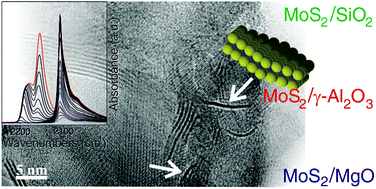
Hydrotreatment catalysts are probably the best described among the heterogeneous catalysts, but up until now the exact nature of the active sites for HDS on MoS2 platelets dispersed on metal oxide supports characterized by a low degree of structural definition has not been fully characterized.
Italian researchers have obtained supported MoS2 model systems from the supported oxide precursor phase on three different metal oxides. The adopted procedure is based on the use of CS2 instead of the classical H2S/H2 mixture in an autoclave. The method is very simple and leads to complete sulfidation of the supported MoO3 phase, suggesting that CS2 has the dual function of a sulfiding and reducing agent.
The structure of the supported MoS2 phase was characterized by means of several complementary techniques: X-ray Powder Diffraction (XRPD), X-ray absorption (XAS), Raman and UV-Vis-NIR spectroscopy, which gave information on the structural, vibrational and electronic properties of MoS2, whereas Transmission Electron Microscopy (TEM) was adopted to determine the morphology of the supported particles.
Read more at:
Catal. Sci. Technol., 2011, Advance Article
DOI: 10.1039/C0CY00050G










